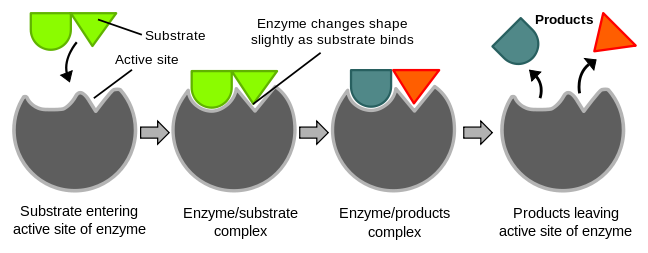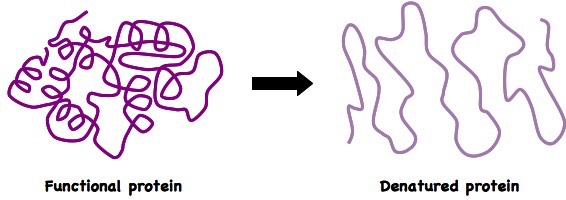What is an enzyme?
- An enzyme is a globular protein that increases the rate of reaction by lowering the activational energy threshold
- It is also known as the biological catalyst
Active site is the position on the enzyme that is occupied by the substrate.
3.6.2 Explain enzyme-substrate specificity
- Enzyme and substrate are complements of each other in terms of shape and chemical properties
- Binding to active site brings the substrate into close physical proximity, creating an enzyme-substrate complex
- The enzyme catalyst the conversion of the substrate into a product, thus changing into an enzyme-product complex
- As the enzyme is not consumed during the reaction, it can continue with another substrate.
- Note: Reaction can go both ways.
Lock & Key hypothesis states that one key to one lock. Thus one enzyme to one particular substrate. The enzymes specificity is due to the complementary shape of the active site and the substrate.
3.6.3 Explain the effects of temperature, pH and substrate concentration on enzyme activity.
Temperature
- Low energy results in insufficient energy for the reaction to take place
- Increasing the temperature will increase the kinetic energy of the substrate and enzyme, thus increasing the chances of collision.
- There is an optimal temperature at which the enzyme could work
- When the temperature is too high, the hydrogen bonds in the enzyme breaks and the enzyme loses its shape thus changing the active site.
pH
- Changing the pH could alter the charge of the enzyme.
- Thus causing a change in shape and changing the active site.
- Enzymes have an optimal pH.
Substrate concentration
- Increasing substrate concentration will increase the chances of collision
- After a certain point, the environment will be too saturated with substrate that the enzymes can't react any faster.
3.6.4 Define denaturation
Denaturation is the structural change in the protein that results in the loss of its biological and chemical properties.
3.6.5 Explain the use of lactase in the production of lactose-free milk
Lactose is a disaccharide (Glucose + Ga(lactose)), while lactase is the enzyme that breaks lactose down.
As majority of the human population are somewhat lactose intolerant, the milk industry needs to produce lactose-free milk.
Milk is repeated passed through this process to ensure lactose-free. As enzymes could be easily re-used, this is a cheap and efficient process.





沒有留言:
張貼留言